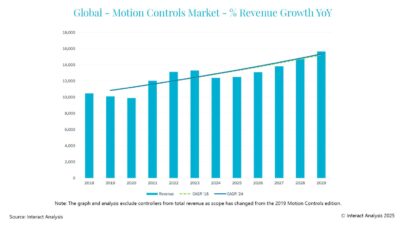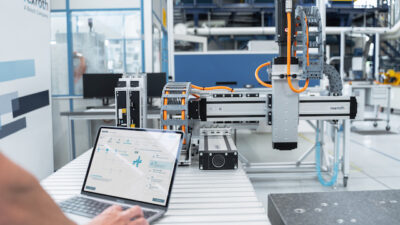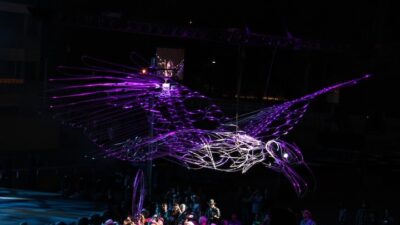When Weiler Engineering upgraded the drive systems on its aseptic blow-fill-seal machines, controller compatibility was limiting the functionality of the equipment. A PLC-integration engineering solution by Siemens provided an operator interface, and expanded application flexibility.
Upgrading components in manufacturing process equipment is something that plant engineers take very seriously, and think through carefully. Equipment upgrade options are inspected and tested empirically before a selection is made. The newly modified machine must operate flawlessly to fulfill the requirements of the facility, and must integrate smoothly with other designated equipment within the plant. However, too often engineers end up settling with less capability from their new components solely because of compatibility issues with their control systems. These compatibility issues can bring the entire upgrade project to a standstill until a suitable solution is found.
|
Weiler’s proprietary blow/fill/seal system is the culmination of 40 years of innovation in machine design and sterile process development, producing a highly advanced aseptic liquid packaging system. |
For original equipment manufacturers the endeavor to make component changes to their production machines is critically magnified in importance. OEMs have to take into consideration the machine’s operating variables for the wide spectrum of their clients’ plant usages, as well as the integration of the full gamut of equipment options that will interface with the machine. Weiler Engineering, Inc., an original equipment manufacturer of aseptic blow-fill-seal machines, is one company that confronted serious PLC compatibility issues when its original controls supplier changed its product offering.
Weiler Engineering is a provider of aseptic custom packaging machinery for pharmaceutical and healthcare applications, and its machines are distributed worldwide. Based in Elgin, IL, and founded in 1959, Weiler’s proprietary blow-fill-seal system is the culmination of 40 years of innovation in machine design and sterile process development, producing a highly advanced aseptic liquid packaging system. The company’s ASEP-TECH blow-fill-seal technology integrates blow molding, sterile filling and hermetic sealing in one continuous operation to produce aseptically manufactured products.
The company uses the latest technological advances in equipment design and systems to ensure the highest level of quality in the production of sterile liquid products. The ability to provide these products, which must meet corporate, scientific, regulatory and end-user requirements, can be a quite demanding. These application challenges are met by specific container and closure designs available with its systems.
Weiler offers several machine models designed to manufacture containers ranging in size from 0.2mL to 1000mL at production rates of up to 15,000 units per hour, depending on container configuration.
| Weiler blow-fill-seal process, |
"We have been using PLCs on our machines for 25 years, and a specific controller for a long time," says Robert Mazur, manager of electrical engineering for Weiler. "The problems came when the company that was providing our PLCs decided to make the product line we were using obsolete. That company’s new, second-generation PLCs were not up to our standards. Another PLC manufacturer was brought in to help us, and it was unsuccessful. They could not provide a completely functional controller for our machines. We were quite concerned, but it was not the manufacturer’s PLCs that failed, it was the integration of its PLCs with our equipment that was the problem."
After a number of unsuccessful attempts to resolve the PLC difficulty, Weiler engineers approached Siemens. "Siemens recommended its SIMATIC S7-300 line of PLCs, which we subsequently purchased," Mazur says.
The blow-fill-seal process
Weiler’s ASEP-TECH equipment has what is called an "extruder." The equipment is doing a continuous plastic extrusion, extruding from five parisons (round tubes of plastic) to 16 parisons. The machine carriage, which holds a mold, will go back, and while the tubes are open, the mold will close on those tubes. (See process photos, right.) The parisons are then cut, and the carriage is moved forward, while plastic continues to come out for the next cut.
The machine then will fill the containers, formed inside the mold, with a liquid, from five to 60 fill nozzles. Then the nozzles will come out of the mold, and the containers are sealed with a final sealing die.
After forming and cooling, everything opens up and the carriage pulls back and repeats the cycle. The formed containers are conveyed out of the machine room to a remote station where excess plastic is removed, and the finished product is conveyed to final packaging.
Design considerations
When Weiler began developing an all-electric machine, it used a different PLC manufacturer from the drive manufacturer, causing the integration to become a major problem. The company then brought in Siemens, which engineered a one-on-one solution to its PLC compatibility problems with the drives, and also provided engineering for the debug time needed. Weiler now uses the Siemens Simatic S7-300 series PLC and touch screens on its all-electric equipment, which give its machines a high level of flexibility in machine control and systems integration.
Siemens also brought something extra to the table: They "helped us to develop a well-documented and well-structured software program that did the communications so we could run our machines," Mazur says. "When a company is having trouble, it is very useful when the supplier has personnel that can come in and understand what needs to be done. Siemens understood what needed to be done to communicate to a third-party device that had issues, and how to help us work through those issues."
The Simatic S7-300 is a modular PLC platform that is optimized for high-performance machine and factory automation, facilitating integrated and economical system solutions in centralized and distributed architectures. There are CPUs with integral I/O, integrated technological functions, and integrated communications interfaces. They all have one thing in common: efficient processing speed for short machine cycle times.
The modules are simply hung on a DIN rail and screwed on to form a rugged, electromagnetically compatible configuration. The backplane bus is already integrated into the modules so the bus connectors can just be plugged in. With the varied range of modules for the Simatic S7-300, centralized expansions and simple distributed structures can be configured.
Welcome flexibility
"The Siemens PLC gives us the capability of doing on-line changes, flexibility that allows our customers to see what is happening in the machine," Mazur says. "From a programming code method there are advantages, in that our customers can see the code, they can troubleshoot it, yet we can lock in certain functions like code calculations that we don’t want them to change."
Mazur says another source of flexibility is how "more advanced"uot;If anything should go wrong—shorts, or a bad connection on a particular card—it will indicate on the card that it has a problem, and internally set alarm bits that are trapped onto a diagnostic screen. It immediately gives the maintenance people at our customer’s site a very fastway of finding the card that is the problem."
Siemens offers more options for graphics on its touch screens than what Weiler had been using. The interface went from about 15 screens that were used for basic operations to about 75 – 80 screens now. Weiler still has the 15 or so basic screens that most of its customers are used to, but now it has everything else behind that including all the screens used for troubleshooting and diagnostics.
The system also has the interface flexibility to work with Siemens’ own products , as well as third-party products that are Profibus registered. Weiler can just connect the wires and control them.
Written by Jim McMahon. Edited by Renee Robbins for Control Engineering.
PLCs, PACs, Programmable Automation Controllers news from Control Engineering
System Integration, Engineering Services news from Control Engineering



